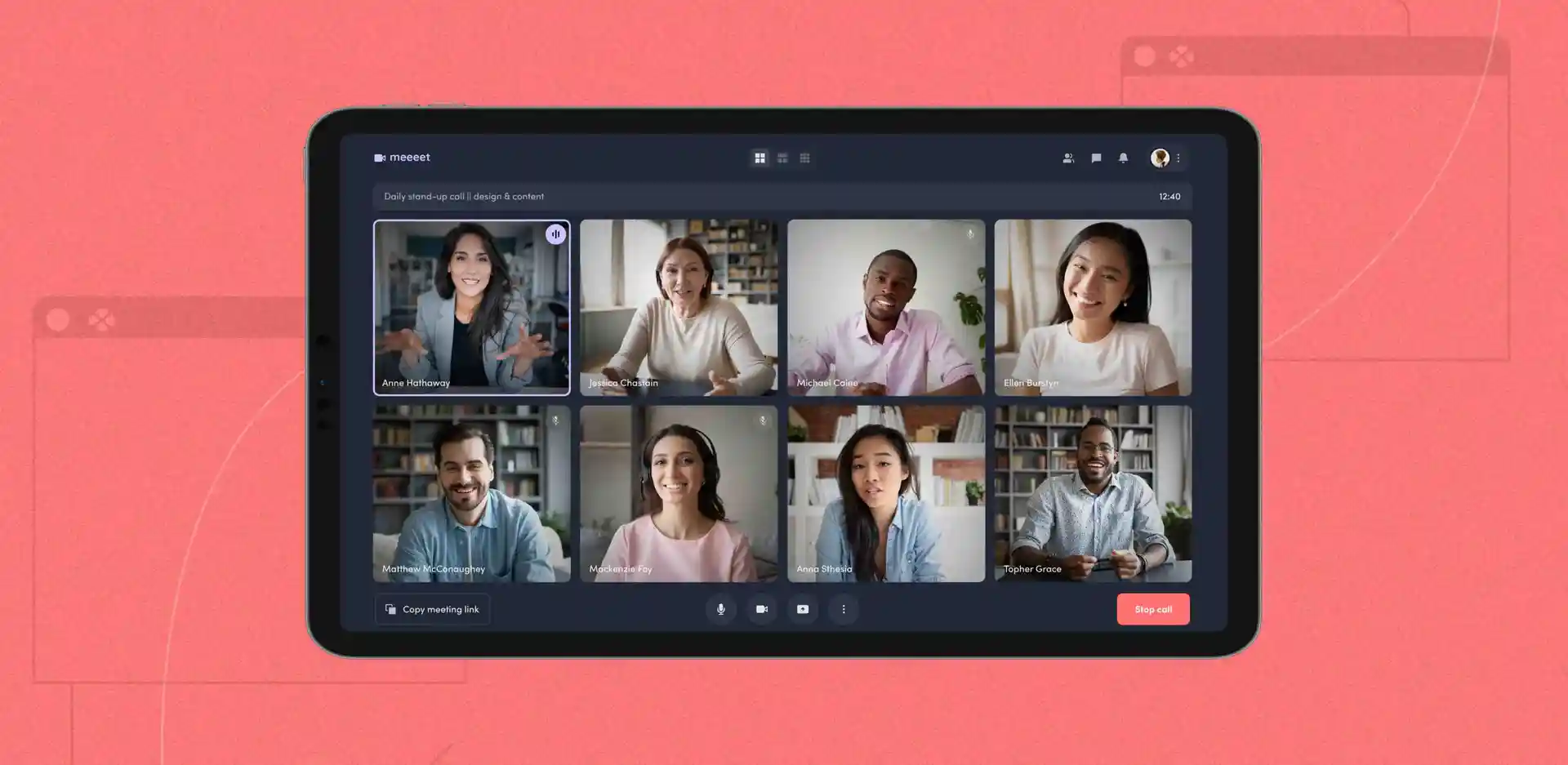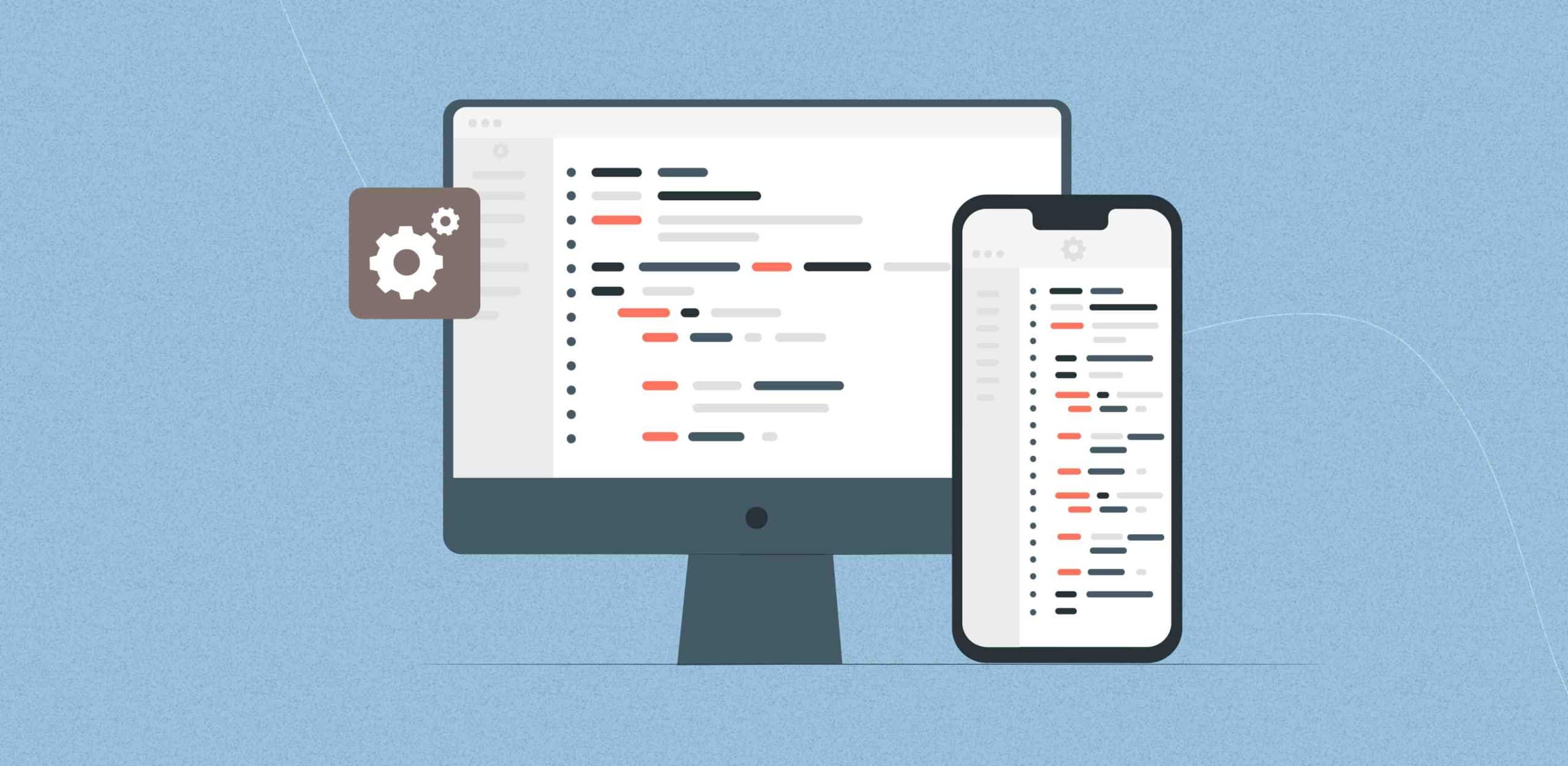Introduction
Real-Time WebRTC Applications are redefining how businesses connect, collaborate, and serve customers in the digital age. In a world where instant communication is no longer a luxury but a necessity, these applications have emerged as a cornerstone of seamless interaction—from virtual doctor visits and live customer support to remote team collaboration.
Far beyond basic video calling, WebRTC (Web Real-Time Communication) has matured into a robust framework powering dynamic, browser-based communication. It enables enterprises to build fast, secure, and scalable real-time communication tools—without plug-ins or downloads—enhancing both user experience and operational efficiency.
In this blog, we’ll explore how real-time WebRTC applications are driving measurable business impact across industries, why custom development offers a distinct edge, and how your organization can leverage this powerful technology to stay ahead of the curve.
Breaking Down Real-Time WebRTC Applications
Real-time WebRTC applications are built on WebRTC (Web Real-Time Communication), an open-source framework that enables direct, browser-based communication through audio, video, and data channels. What makes WebRTC revolutionary is its ability to establish real-time connections between users—without the need for downloads, external plug-ins, or third-party software. It works seamlessly across all major web browsers and mobile environments, delivering instant, high-quality interactions.
At its core, WebRTC is designed for low-latency, peer-to-peer communication. Unlike traditional systems that route media through central servers (adding delays and costs), WebRTC establishes direct connections between users. This not only speeds up communication but also reduces bandwidth usage and infrastructure overhead—making it ideal for scalable, real-time applications.
Here’s what truly sets real-time WebRTC applications apart:
- Peer-to-Peer Architecture: Enables near-instant audio and video transmission by connecting users directly, ensuring ultra-low latency and smooth interaction—even in high-demand environments like virtual classrooms or telehealth consults.
- End-to-End Encryption: Every communication session is secured with built-in encryption protocols, making WebRTC inherently privacy-friendly and compliant with industry standards like HIPAA and GDPR.
- Cross-Platform Compatibility: WebRTC works seamlessly across devices—desktops, tablets, and smartphones—ensuring a consistent experience whether your user is joining a meeting on a laptop or seeking support via a mobile app.
- Developer-Ready & API-Friendly: Its flexible APIs allow developers to integrate WebRTC into a wide range of applications—from CRM systems and learning platforms to custom enterprise solutions. It also supports integration with signaling servers, media servers, and custom workflows.
Whether you’re developing a telemedicine solution, a live eLearning portal, a customer engagement platform, or an internal collaboration tool, real-time WebRTC applications deliver the dynamic, interactive experience today’s users expect. More than just a technical component, WebRTC is a strategic advantage that can elevate user experience, improve responsiveness, and drive business growth.
Looking for a WebRTC development partner who understands your industry? Get in touch with us and discover how our solutions are changing the way businesses communicate.
How Real-Time WebRTC Applications Are Reshaping Core Experiences?
Real-time WebRTC applications are no longer a futuristic concept—they’re already reshaping how businesses operate, interact with customers, and deliver services. Across nearly every industry, companies are replacing fragmented communication with seamless, secure, and interactive real-time experiences that boost efficiency, engagement, and trust. Let’s dive into how this powerful technology is actively transforming business models across key sectors.
Real-time WebRTC Applications for Healthcare
Gone are the days when medical consultations meant traveling and waiting in crowded clinics. Today, WebRTC development is empowering healthcare providers to deliver real-time care directly through patients’ devices—be it smartphones, tablets, or desktops.
Through real-time WebRTC applications, doctors can perform video consultations, review patient records on the fly, and even conduct remote diagnostics with connected devices. This isn’t just about convenience—it’s about extending healthcare access to rural areas, enabling mental health support during emergencies, and ensuring continuity of care with minimal overhead.
Use Case Highlight:
A telehealth platform integrates HIPAA-compliant WebRTC video calls with EMR access, allowing doctors to review scans, annotate records, and chat with patients in a single secure interface—no downloads, no delays.
Dive deep into Custom WebRTC Solutions for Healthcare & Telemedicine.
Real-time WebRTC Applications for Education
Education has undergone a dramatic transformation, and WebRTC for industries like EdTech is at the heart of it. With the shift toward hybrid and remote learning, real-time WebRTC applications allow educators to create dynamic, interactive classrooms that go beyond passive lectures.
Teachers can now share screens, moderate live polls, divide students into breakout rooms, and collaborate on virtual whiteboards—all within the browser. More importantly, students can engage with their peers and instructors just as effectively as in a physical classroom.
Use Case Highlight:
An EdTech platform uses real-time communication tools to support live classes with hand-raise features, whiteboarding, and collaborative quizzes—delivering an immersive learning experience for K-12 and higher education.
Real-time WebRTC Applications for eCommerce
In a sea of product pages and generic chatbots, real-time WebRTC applications for eCommerce are bringing human connection back to online shopping. Virtual product walkthroughs, live consultation, and instant assistance are now differentiators in the crowded eCommerce space.
Brands, especially in luxury and high-involvement categories, are integrating live video sessions into product pages to mimic the in-store experience. This level of real-time engagement significantly increases trust, reduces returns, and boosts conversions.
Use Case Highlight:
A fashion retailer uses WebRTC-powered personal shopping assistants who guide customers through the site via live video, leading to a 25% increase in average order value and a more premium brand perception.
Real-time WebRTC Applications for Entertainment
Entertainment platforms are no longer one-way broadcasters—they’re becoming interactive hubs. From live concerts to virtual fan meetups and multiplayer gaming, real-time WebRTC applications enable ultra-low-latency audio and video streams that feel instant and personal.
Musicians, creators, and brands use WebRTC to go beyond passive streaming—letting audiences engage via live Q&As, backstage chats, or collaborative sessions.
Use Case Highlight:
A live concert platform uses WebRTC development to power intimate VIP fan sessions where users interact with artists via real-time video, creating unforgettable digital experiences that drive subscriptions and loyalty.
Real-time WebRTC Applications for Customer Support
Waiting 24–48 hours for a support email? That’s outdated. Businesses today are embedding real-time communication tools directly into their platforms, letting users talk to support agents instantly through video, voice, or screen-sharing.
This shift not only improves resolution speed but also builds customer trust. The ability to see and interact with a real person—even through a screen—often makes the difference between churn and retention.
Use Case Highlight:
A SaaS company integrates WebRTC-based live support into its dashboard, enabling instant video calls with screen-share and co-browsing. As a result, ticket backlog is reduced by 40%, and customer satisfaction scores skyrocket.
Real-time WebRTC Applications for Corporate Collaboration
While Zoom and Teams have become household names, they weren’t built with every business need in mind. Enterprises are now creating custom real-time WebRTC applications to embed communication natively into their internal workflows—without switching between multiple tools.
This embedded communication approach reduces friction, increases productivity, and enhances team collaboration, especially in distributed workforces.
Use Case Highlight:
An HR management platform integrates a WebRTC-based video chat feature that lets HR managers interview candidates, host onboarding sessions, and conduct internal training—all within the same app.
Real-time WebRTC Applications for Banking & Finance
The financial services industry is embracing real-time WebRTC applications to personalize digital banking experiences. Whether it’s mortgage consultations, wealth management advice, or KYC verification, face-to-face interaction is making a comeback—virtually.
Banks and fintech companies are building secure, real-time video tools that allow advisors to guide clients through transactions, explain policies, or verify documents, all while ensuring data privacy and compliance.
Use Case Highlight:
A digital bank integrates WebRTC-powered live video chat within its mobile app, enabling instant support for loan queries and onboarding, cutting down approval time and boosting user satisfaction.
Tangible Business Gains from Real-Time WebRTC Applications
When it comes to digital transformation, technology alone isn’t enough—business outcomes are what truly matter. That’s why companies across sectors are investing in real-time WebRTC applications. These solutions don’t just modernize communication; they unlock measurable value across the customer journey, internal workflows, and bottom-line performance.
Here’s a closer look at the core benefits:
Increased Engagement
Real-time interaction dramatically enhances user engagement. Whether it’s a student participating in a virtual classroom, a shopper consulting a live assistant, or a patient speaking to a doctor, instant interaction leads to longer sessions and deeper involvement. The immediacy and responsiveness of WebRTC keep users present—and more likely to return.
Faster Conversions
For customer-facing platforms, time is everything. Live product demos, real-time consultations, or in-app video support significantly reduce hesitation and speed up the decision-making process. Real-time WebRTC applications eliminate friction from the buying journey, leading to quicker conversions and increased revenue.
Cost Savings
Unlike traditional video conferencing solutions that rely on third-party platforms, WebRTC is open-source and browser-native. That means no costly licenses, no installation hurdles, and no reliance on third-party plug-ins. Businesses can build and scale real-time solutions in-house, reducing long-term operational costs.
Enhanced Brand Trust
In today’s privacy-conscious world, customers value secure, seamless interactions. WebRTC encrypts communication end-to-end and provides a smooth, professional experience—instilling confidence in your brand. Whether you’re in healthcare, education, or eCommerce, trust is a competitive advantage.
Effortless Scalability
As your user base grows, so should your communication infrastructure. Real-time WebRTC applications are built to scale—whether you’re serving hundreds of users or hundreds of thousands. From adding new features to expanding across geographies, WebRTC solutions can grow with your business without requiring a complete rebuild.
Measurable Results That Matter
Still wondering if the investment pays off? Businesses already using WebRTC have seen game-changing results:
- 3x higher retention in online classrooms where engagement tools are powered by real-time video
- 30% faster customer support resolutions when video or co-browsing is integrated directly into support platforms
- 20% increase in purchase completion rates on eCommerce sites with real-time shopping assistants
And for internal teams, WebRTC-based collaboration tools allow employees to communicate and collaborate without ever leaving the platform they’re already working in—eliminating the disruption of switching between multiple tools.
Why Off-the-Shelf Doesn’t Cut It: The Case for Custom Real-Time WebRTC Development?
While platforms like Zoom, Google Meet, or Twilio may offer a quick fix for real-time communication, they fall short when it comes to long-term value and business-specific needs. Here’s why:
Limitations of Off-the-Shelf Solutions:
Generic Experience
These tools are built for the masses—not tailored for your industry or customer journey.
Lack of Branding Control
Your users interact with third-party branding and interfaces, reducing your brand visibility and personalization.
Poor System Integration
Limited ability to integrate deeply with critical platforms like your CRM, EHR, or LMS—resulting in broken or inefficient workflows.
Rigid Workflows
You must adapt your operations to the tool’s limitations rather than building a tool that adapts to you.
No Data Ownership
User session data, quality metrics, and behavioral analytics are controlled by the vendor, limiting your ability to optimize.
Compliance Risks
Many off-the-shelf platforms lack industry-specific compliance, making it difficult to meet HIPAA, GDPR, or SOC2 requirements.
Advantages of Custom Real-Time WebRTC Application Development:
Fully Branded Experience
Control every visual and functional element to match your brand and deliver a seamless, on-brand user journey.
End-to-End Integration
Seamlessly connect with your internal systems—CRM, EHR, LMS, or proprietary tools—ensuring efficient, connected workflows.
Custom Workflows for Your Business
Build features and flows that reflect your unique operational needs, customer expectations, and industry best practices.
Own Your Data
Get full access to session logs, engagement metrics, and performance analytics to continuously improve your product.
Scalable Infrastructure
Design a backend architecture that grows with your business and handles fluctuating traffic with ease.
Built-in Compliance
Ensure your real-time communication tools meet necessary regulations like HIPAA, GDPR, and SOC2 from day one.
Competitive Advantage
Differentiate yourself with a communication experience that no off-the-shelf tool can replicate.
The Hidden Business Risks of NOT Using Real-Time Capabilities
Still debating whether to invest in real-time WebRTC applications? While the benefits are clear, it’s just as important to understand what’s at stake if you don’t make the shift—because inaction carries its own cost.
Customer Drop-Offs and Churn
In a world where users expect instant responses, delays in communication are more than just inconvenient—they’re deal-breakers. If your support system lags or your platform lacks real-time interaction, users are likely to abandon the experience altogether. This directly affects customer satisfaction, brand perception, and ultimately, retention. When customers know they can get faster, more engaging experiences elsewhere, they will.
Operational Inefficiencies
Many businesses rely on a patchwork of tools—email, external video conferencing platforms, messaging apps—to bridge communication gaps. But this disjointed approach leads to fragmented workflows, duplicate efforts, and communication breakdowns. Without real-time capabilities integrated into your core systems, internal teams waste valuable time switching between tools instead of focusing on productivity and outcomes.
Competitive Disadvantage
Let’s be clear: your competitors aren’t waiting. Across industries, companies are already deploying WebRTC solutions to offer real-time services, support, and collaboration. By not adopting similar capabilities, you’re not just lagging—you’re handing your competitors an edge in customer experience, speed, and efficiency. In rapidly evolving markets, that gap can quickly become irreversible.
Security Vulnerabilities
Using third-party plugins, browser extensions, or downloadable software for real-time communication often introduces unnecessary security risks. Real-time WebRTC applications, on the other hand, are built with end-to-end encryption and operate natively within browsers—offering a safer, more streamlined alternative. Sticking with outdated communication systems may expose your organization to data breaches, compliance issues, and loss of user trust.
In industries like healthcare, online education, and SaaS—where every second can impact a life, a learning outcome, or a critical sale—falling behind in real-time communication tools isn’t just a missed opportunity. It’s a strategic risk. And in a hyper-connected world, losing relevance can be far more damaging than losing revenue.
WebRTC +What’s Next: AI, 5G, and Predictive Real-Time Experiences
Real-time WebRTC applications are evolving rapidly—not just in performance, but in intelligence. The next wave of innovation is being shaped by three major forces: artificial intelligence (AI), 5G connectivity, and edge computing. Together, they’re pushing the boundaries of what real-time communication can deliver, creating smarter, faster, and more personalized digital experiences.
AI-Enhanced Communication
The integration of AI with WebRTC is unlocking a new generation of user-centric features that improve both accessibility and quality. These advancements include:
- Real-time transcription and translation: AI can now instantly convert speech to text and translate conversations in real time, breaking down language barriers in global collaboration, customer support, and telemedicine.
- Emotion and sentiment detection: By analyzing facial expressions, tone of voice, and speech patterns, AI-powered WebRTC applications can provide emotional context—helping sales reps, therapists, and educators adapt in the moment.
- Noise suppression and background effects: Advanced noise cancellation filters out disruptive background sounds, while intelligent background blur and replacement features enhance professionalism in remote meetings or live customer interactions.
These capabilities not only improve the experience but also make real-time communication tools more inclusive and effective across industries.
5G-Powered Speed and Quality
As 5G networks become more widespread, real-time WebRTC applications are benefitting from dramatically improved bandwidth and ultra-low latency. This enables:
- Crystal-clear video and audio, even on mobile networks
- Faster data transmission for real-time collaboration
- Enhanced reliability in dense or mobile environments
For businesses operating in healthcare, education, or field services, 5G means smoother consultations, uninterrupted streaming, and more dependable communication with mobile users—anytime, anywhere.
Edge Computing: Intelligence at the Source
Edge computing is bringing processing power closer to the user, reducing the dependency on centralized servers. When combined with WebRTC, this translates to:
- Smarter routing decisions that minimize lag
- Faster processing of real-time data and analytics
- Improved security with sensitive data handled locally
This distributed model is especially powerful for applications that require rapid response times, like remote diagnostics, live gaming, and smart manufacturing systems.
How to Choose the Right WebRTC Development Partner?
Choosing the right development partner for your real-time WebRTC application can be the difference between a scalable success and a frustrating tech bottleneck. While WebRTC offers powerful capabilities, it’s a complex framework that requires specialized knowledge to implement correctly—especially when real-time performance, security, and reliability are at stake.
Here are the essential criteria to guide your selection:
Technical Expertise
WebRTC isn’t a plug-and-play technology. It involves a deep understanding of network protocols, media encoding, NAT traversal, ICE frameworks, STUN/TURN servers, and signaling architecture. Your development partner should demonstrate hands-on experience with these components and be capable of customizing them to your business needs. Ask about previous implementations and how they handled challenges like high concurrency or packet loss.
Cross-Platform Compatibility
Your users may be accessing your platform from a browser, mobile device, or even an embedded system. A capable WebRTC partner should ensure that the real-time application runs consistently and smoothly across all major platforms—iOS, Android, Web, and desktop environments—without requiring additional plugins or downloads. Native mobile SDK integration and adaptive UI/UX design are a must.
Security-First Mindset
Since real-time WebRTC applications often handle sensitive data—especially in industries like healthcare and finance—security should never be an afterthought. Your partner should implement end-to-end encryption, secure signaling, data channel protection, and robust fallback strategies using TURN servers. Be sure to discuss compliance with regulations like HIPAA, GDPR, and SOC 2 if applicable to your use case.
Proven Portfolio Across Industries
Experience matters. Look for a partner who has built WebRTC solutions in your specific industry—whether that’s telemedicine, eLearning, SaaS, or customer service. They’ll have a better understanding of common pain points, feature expectations, compliance requirements, and user behavior patterns. Case studies and client references are valuable indicators of their domain expertise.
Long-Term Support & Scalability
Launching a real-time app is only the beginning. WebRTC applications need regular updates to handle evolving browser APIs, changing network conditions, and new feature requests. A strong partner should offer post-launch support including monitoring, debugging, performance optimization, and scaling strategies as your user base grows.
Know more about how to choose the best WebRTC App Development Company for Video Conferencing.
Conclusion
The demand for real-time WebRTC applications is no longer limited to early adopters. From healthcare to retail, from education to enterprise—businesses are experiencing transformative growth through real-time communication tools.
Don’t settle for slow support, disconnected apps, or generic solutions. Your customers expect more—and WebRTC for industries is how you deliver it.
Whether you’re looking to upgrade your existing systems or launch a cutting-edge platform, we’re here to help.
Contact Us for Real-Time WebRTC Application Development
Let’s turn your business vision into a real-time experience your users will love.
Get in touch with our WebRTC development experts for a free consultation and discover how custom real-time WebRTC applications can drive engagement, revenue, and long-term success.
Let’s transform your business for a change that matters.
F. A. Q.
Do you have additional questions?
What is a real-time WebRTC application, and how is it different from regular video conferencing tools?
A real-time WebRTC application enables live audio, video, and data communication directly through browsers or mobile apps—without downloads or plugins. Unlike off-the-shelf tools like Zoom, WebRTC can be fully customized, embedded into your platform, and scaled according to your business needs.
Which industries benefit the most from WebRTC development?
Industries like healthcare (telemedicine), education (virtual classrooms), customer service (live support), eCommerce (live shopping assistance), and enterprise collaboration (internal comms tools) are actively using WebRTC solutions to deliver real-time user experiences.
Is WebRTC secure enough for enterprise-level or HIPAA-compliant applications?
Yes. With proper implementation, WebRTC supports end-to-end encryption, secure signaling, and compliance with standards like HIPAA and GDPR. Security depends on how well the solution is architected by your WebRTC development partner.
Can WebRTC be integrated with our existing CRM, LMS, or EHR system?
Absolutely. One of the major strengths of custom WebRTC applications is their ability to integrate with third-party systems, databases, and APIs—creating a seamless workflow within your existing software ecosystem.
How scalable are real-time WebRTC applications for large user bases?
With the right architecture—using SFU/MCU servers, TURN/STUN networks, and adaptive bitrate streaming—real-time WebRTC applications can support thousands of concurrent users while maintaining low latency and high-quality media streams.
What’s the difference between using Zoom APIs vs building a custom WebRTC solution?
Zoom APIs offer limited customization and keep user data on their servers. Custom WebRTC development gives you full control over branding, workflows, analytics, compliance, and infrastructure—making it ideal for long-term scalability and data ownership.
How long does it take to build a real-time WebRTC application?
Timelines vary based on complexity, features, and integrations. A basic MVP can take 6–8 weeks, while a full-featured, production-grade solution with multi-platform support and compliance may take 3–6 months.
Accordion TitleWhat technical challenges should I be aware of when developing with WebRTC?
WebRTC involves handling network inconsistencies, NAT traversal, browser compatibility, signaling protocols, and media quality optimizations. That’s why choosing an experienced WebRTC development partner is crucial.
Do we need a dedicated DevOps team for WebRTC infrastructure?
Yes, for production environments. Managing TURN servers, signaling services, monitoring, and autoscaling media servers requires DevOps expertise to ensure consistent uptime and performance.
How do I choose the right WebRTC development company?
Look for a team with deep technical experience, a strong portfolio of WebRTC for industries, proven cross-platform deployment, and a security-first mindset. They should offer both development and long-term support tailored to your use case.















